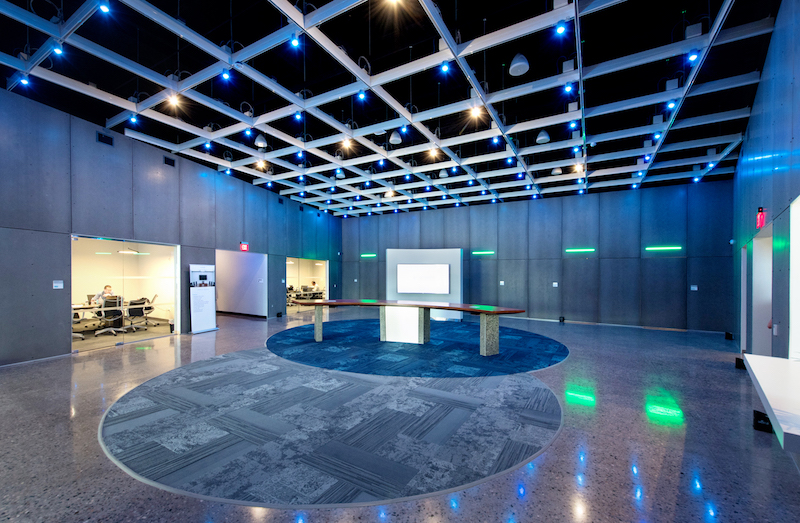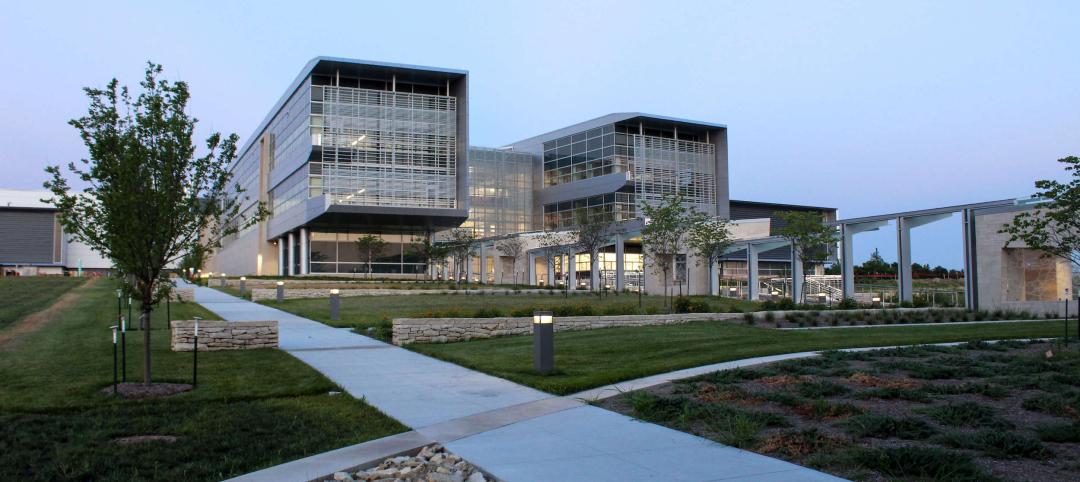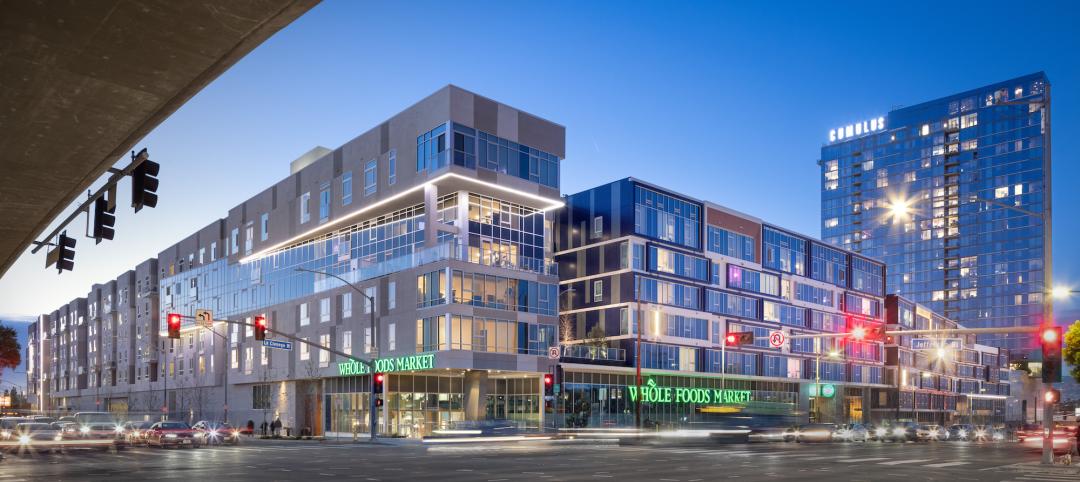The cloud is coming of age. Fortune 500 companies like Coca-Cola and General Mills that once exclusively managed their own data centers are starting to migrate to the cloud. They’ve found that outsourcing vital IT infrastructure can be a reliable, cost-effective strategy.
The data center industry is projected to double by 2021 from its capacity in 2015, according to real estate consultant JLL. An expected explosion in Internet of Things applications will lead to even more bits and bytes being collected, stored, and analyzed. Factor in what JLL calls “American consumers’ insatiable thirst for digital content,” and you have explosive demand for data storage.
One new mini-trend: Cloud providers are spreading capacity near NFL cities, says Scott Ruch, AIA, Executive Managing Principal and Critical Facilities Sector Leader with Corgan, referring to large cities with National Football League teams.
New migrants to the cloud are also building their data centers to their large metro areas in order to sleep better knowing vital infrastructure is easily accessible near corporate offices. “They want the ability to check in on those facilities,” Ruch says. But rural areas with temperate climates (for more cost-efficient cooling) and low utility rates are still in the mix.
In Europe, some countries now require sensitive data to be housed within their borders. These regulations have complicated data center location decisions, in some cases forcing companies to build out sites in several countries rather than building one consolidated facility.
Data centers are getting cheaper to build. Five to 10 years ago, the average cost was $15-20 million per megawatt, Ruch says. Today, it’s $7-15 million. Customers are spending more wisely on risk mitigation. Shells to be used in high-risk hurricane and tornado zones must still be built to withstand 170-mph winds, but outside of those zones, less costly 120-mph-resistant structures will do.
UPS system design has been upgraded such that most facilities use block-redundant designs, which provide about 20% backup power redundancy, rather than more expensive two-end systems, with 100% redundancy. The smaller backup capacity is usually adequate for the mega-facilities being built by the big providers: if one site goes down completely, they can switch to another data center, Ruch says. Most of the big cloud providers have enough system-wide capacity to weather a short, single-site shutdown.
ALSO SEE: BD+C Giants 300 data centers rankings
Top 25 data center architecture firms
Top 30 data center engineering firms
Top 35 data center construction firms
RECYCLING OLDER DATA CENTERS
Many legacy data centers are becoming obsolete. As a result, a niche market in salvaged equipment has surfaced, says Jonathan Clay, President and CEO, The Blue River Group. Chillers, raised flooring, and backup generators can be reused, he says. Some older equipment is finding its way to Asia, Africa, and Mexico. “There’s no reason to put it in a landfill,” says Clay.
Data centers are also making significant strides in energy efficiency. Most cloud providers today aim for a power usage effectiveness rating of 1.25 or less, Ruch says, well ahead of the 1.5 to 1.6 PUE range of the last decade.
Indirect/direct evaporative cooling, known as IDEC, which uses outside ambient air for cooling purposes, has been refined to the point where even air temperatures in the low 80s can be suitable. Pinpoint cooling can be directed to specific racks rather than to the entire space, says Clay. Alternating hot racks with cool racks can also reduce the overall cooling burden. Removing the chassis from servers makes cooling more effective, too.
Some data centers track and publish their PUEs—some as low as 1.1—online and in real time, according to published reports. Big players like Google, Facebook, and Intel are leading the way. Salesforce recently said it has achieved net-zero greenhouse gas emissions and is now providing a carbon-neutral cloud for all customers.
These are encouraging developments. But with demand for storage capacity rising as fast as you can say YouTube, will data center providers be able to keep up?
SEE ALL 2017 GIANTS 300 RANKINGS
Related Stories
Sponsored | Fire and Life Safety | Jul 12, 2023
Fire safety considerations for cantilevered buildings [AIA course]
Bold cantilevered designs are prevalent today, as developers and architects strive to maximize space, views, and natural light in buildings. Cantilevered structures, however, present a host of challenges for building teams, according to José R. Rivera, PE, Associate Principal and Director of Plumbing and Fire Protection with Lilker.
Building Owners | Jul 12, 2023
Building movement: When is it a problem?
As buildings age, their structural conditions can deteriorate, causing damage and safety concerns. In order to mitigate this, it’s important to engage in the regular inspection and condition assessment of buildings for diagnosis.
Mass Timber | Jul 11, 2023
5 solutions to acoustic issues in mass timber buildings
For all its advantages, mass timber also has a less-heralded quality: its acoustic challenges. Exposed wood ceilings and floors have led to issues with excessive noise. Mass timber experts offer practical solutions to the top five acoustic issues in mass timber buildings.
Multifamily Housing | Jul 11, 2023
Converting downtown office into multifamily residential: Let’s stop and think about this
Is the office-to-residential conversion really what’s best for our downtowns from a cultural, urban, economic perspective? Or is this silver bullet really a poison pill?
Adaptive Reuse | Jul 10, 2023
California updates building code for adaptive reuse of office, retail structures for housing
The California Building Standards Commission recently voted to make it easier to convert commercial properties to residential use. The commission adopted provisions of the International Existing Building Code (IEBC) that allow developers more flexibility for adaptive reuse of retail and office structures.
Laboratories | Jul 10, 2023
U.S. Department of Agriculture opens nation’s first biosafety level 4 containment facility for animal disease research
Replacing a seven-decade-old animal disease center, the National Bio and Agro-Defense Facility includes the nation’s first facility with biosafety containment capable of housing large livestock.
Adaptive Reuse | Jul 6, 2023
The responsibility of adapting historic university buildings
Shepley Bulfinch's David Whitehill, AIA, believes the adaptive reuse of historic university buildings is not a matter of sentimentality but of practicality, progress, and preservation.
Market Data | Jul 5, 2023
Nonresidential construction spending decreased in May, its first drop in nearly a year
National nonresidential construction spending decreased 0.2% in May, according to an Associated Builders and Contractors analysis of data published today by the U.S. Census Bureau. On a seasonally adjusted annualized basis, nonresidential spending totaled $1.06 trillion.
Architects | Jul 5, 2023
Niles Bolton Associates promotes Jeffrey Smith, AIA, to President and C. Cannon Reynolds, AIA, to Managing Director
Niles Bolton Associates (NBA), a leading architecture, planning and design firm, announces leadership changes as a part of its ongoing commitment to future growth. Current Executive Vice President, Jeffrey Smith, AIA, has been named President and C. Cannon Reynolds, AIA, has been named Managing Director effective June 30, 2023.
Mixed-Use | Jun 29, 2023
Massive work-live-play development opens in LA's new Cumulus District
VOX at Cumulus, a 14-acre work-live-play development in Los Angeles, offers 910 housing units and 100,000 sf of retail space anchored by a Whole Foods outlet. VOX, one of the largest mixed-use communities to open in the Los Angeles area, features apartments and townhomes with more than one dozen floorplans.

















